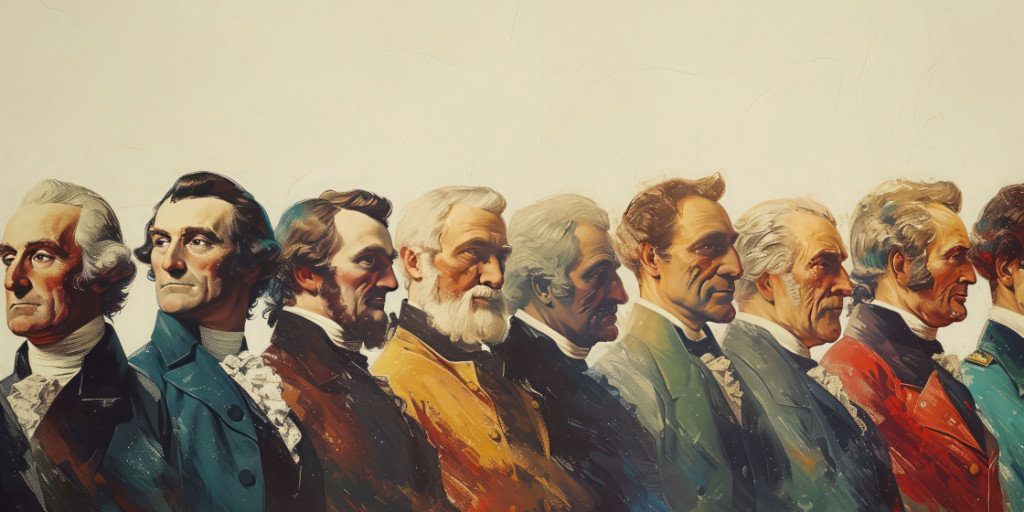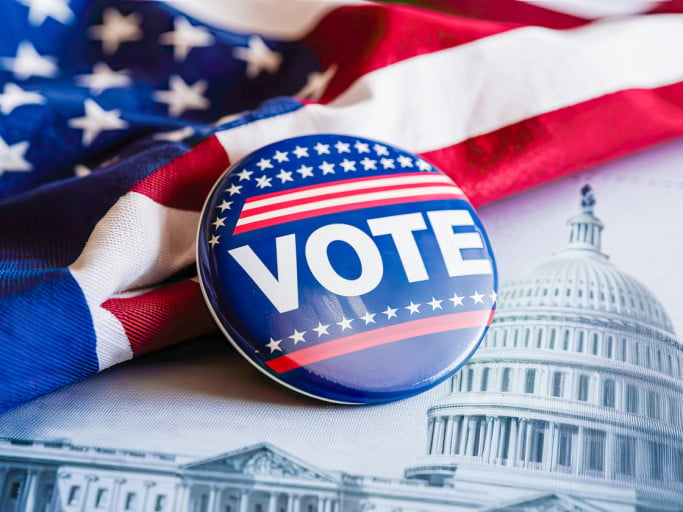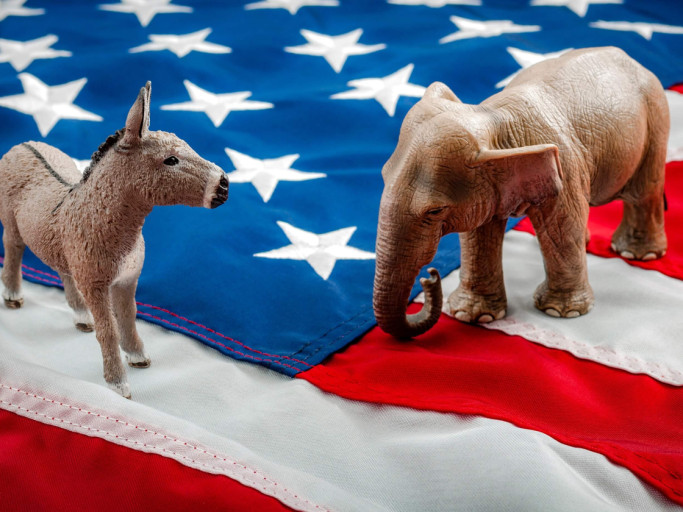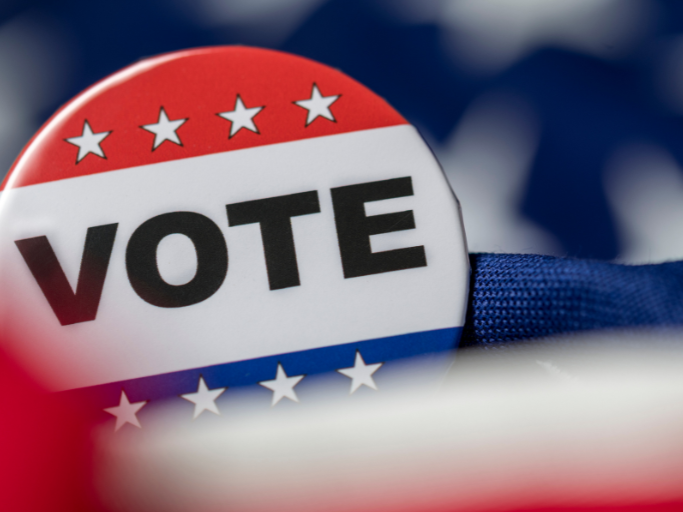Home / Blog / Politics & Election Campaigns / The History of Promotional Political Products: Campaign Merchandise
The History of Promotional Political Products: Campaign Merchandise
Date posted: 3rd June 2024 in Politics & Election Campaigns
Last updated: 12th June 2024

The history of promotional products in politics is as rich and varied as the political campaigns they’ve been used to support. From the earliest days of the American presidency to the complex modern election strategies of today, campaign merchandise has played a crucial role. It has helped to drive messaging, shape political narratives, rally supporters and solidify the particular brands of the candidates.
This blog delves into the evolution of political campaign promo items, exploring their historical significance and the innovations that have emerged over time.
How did political promo products begin?
The use of promotional products as a tool in political campaigns in our country dates right back to the first presidential elections. In 1749 buttons were created which celebrated the inauguration of George Washington, although the first president had not formally run in a campaign as we understand the term today. These early buttons featured simple designs but laid the groundwork for the political merchandise which would follow in the future.
As political campaigns became more organized, so did the promotional strategies which accompanied them. By the time of the presidential election in 1840 (when William Henry Harrison was elected as the ninth president, though died after just 31 days in office), a more thoughtful approach had begun to develop. Harrison’s campaign had included a variety of sophisticated items including log cabin-shaped bottles and bandanas. The design of them was a smart tactic, as it was intended to appeal to the common man and reinforce Harrison's image (as a war hero and a man of the people).
The Golden Age of Campaign Merchandise
The late 19th and early 20th centuries saw an explosion in the creativity of political merchandise, with a wider variety of products. From this period onwards, political buttons became very popular at every election.
Theodore Roosevelt’s campaigns were notable for their extensive use of promotional items, which included bandanas, buttons, ribbons, pins and even toys. Roosevelt (the 26th president, serving from 1901 to 1909) clearly understood the great power of these items to create a personal connection with voters and maintain political messaging.
FDR (aka Franklin D. Roosevelt, the 32nd president and, from 1933 until his death in 1945, the longest serving) utilised merchandise as an essential component during campaigns. His buttons were ubiquitous, often featuring urgent slogans, striking imagery and bold designs. These buttons were affordable, easy to distribute, and highly effective at spreading the core messages of his campaigns.
Mid-20th Century Innovations
The middle era of the 20th century brought new innovations in political campaign supplies, in part thanks to the societal changes that were happening. The advent of domestic TV and the widening use of the automobile significantly influenced campaign strategies. During the 1960 campaign by JFK (aka John F. Kennedy, the 35th president, serving from 1961 until his assassination in 1963), bumper stickers were famously utilized. A novel promotional product at the time, these JFK stickers allowed supporters to display their allegiance to him publicly - essentially turning their cars into mobile billboards moving his message around.
Campaigns also began to explore a much wider range of items. In addition to effective traditional fare such as buttons, badges, stickers, stamps and signs, campaigns also started to distribute pens, clothing, mugs and other custom printed materials. These items not only promoted the candidate campaigns but also served as practical day-to-day items, ensuring they remained in circulation. In other words, each time a voter used a pen or wore a cap branded with campaign logos, it was a new instance of political messaging.
Modern Campaign Merchandise
The modern era of political campaigning has seen an even greater expansion in the types and variety of promotional items used during election cycles. The 2016 campaigns, for example, particularly highlighted the importance of making merchandise impactful. Donald Trump made headlines with the iconic ‘Make America Great Again’ red baseball caps, which became an iconic symbol of his campaign and a popular fashion item. Trump's campaign spent $3.3 million on promotional products, accounting for 9.8% of his total campaign spending.
On the other hand, Bernie Sanders' campaign invested heavily in a wide array of promotional products, spending $7.5 million, which made up 6% of his total spending. This included traditional items like buttons and bumper stickers, as well as more modern products like tech accessories and apparel.
According to ASI Central, the most sold promo products to political candidates are pens (75%), bags (50%), apparel (36%), desk/office items (36%), headwear (29%), drinkware (21%), tech products (7%) and health-related items (7%).
The Role of Technology
Technology has transformed political campaign products in recent years. Campaigns now utilize digital tools to create and distribute merchandise more efficiently. Custom election campaign products can be designed, ordered and shipped with unprecedented speed, allowing campaigns to respond quickly to current trends and events.
Data analytics enable campaigns to target specific demographics with tailored promotional items. Therefore, campaigns can analyze which products are most popular in certain regions and adjust strategies accordingly. As technology continues to advance, we can expect even more innovative promotional products to emerge in future campaigns.
Today’s Campaign Merchandise
Today, promotional products remain an essential component of political campaigns at all levels - whether presidential races to local elections. Candidates utilise a wide range of promotional items to connect with voters, spread their messages and build their brands. These items remain a vital part of campaign strategies, helping to build brand recognition and connect with voters. Everything Branded offers a variety of custom political campaign supplies, from signs to personalized apparel, ensuring that political campaigns have the powerful tools to gain the advantage and succeed.
What Do I Need To Know Before Ordering My Custom Campaign Supplies?
-
How Can I Submit My Artwork for Political Printing?
You can submit your artwork through our online portal or by contacting our design team directly. We accept various file formats and can assist with any design adjustments needed.
-
Do you offer bulk discounts?
Yes, we offer bulk discounts on large orders. Please contact our sales team for specific pricing based on your order size.
-
What printing methods do you use for branding?
We use a range of printing methods including screen printing, digital printing, and embroidery, depending on the product and your requirements.
-
Is there a minimum order requirement?
Yes, minimum order requirements vary by product. Please check the product details or contact us for more information.
-
How long will it take to receive my order?
Delivery times vary based on the product and order size, but we strive to deliver all orders within 7-10 business days. Rush production and shipping options are available.
-
Do you offer rush production and shipping?
Yes, we offer rush production and expedited shipping options. Please contact our customer service team to discuss your timeline and needs.
Sources:
- ASI Central (2016) The Essential Role Of Promotional Products in Politics
- Cornell University Library
- Racked.com (2016) A Brief History of Presidential Campaign Merch
- National Museum Of American History
- The Evolution of Political Marketing in U.S. Presidential Campaigns (digital commons)
- Google Arts & Culture Bottles, Bobbleheads, and Bubblegum
- Linkedin (2023) Buttons to Banners
- Smithsonian (2016) The Swag and Swagger Behind American Presidential Campaigns

Strengthen your brand perception with promotional products
Chat online or call us today on 1800-586-1615
More Articles

The History of Promotional Political Products: Campaign Merchandise
3rd June 2024 in Politics & Election Campaigns

Promotional Product Trends and the 2024 US Election
12th November 2024 in Politics & Election Campaigns

